
About Andrew Cusack
 Writer, web designer, etc.; born in New York; educated in Argentina, Scotland, and South Africa; now based in London.
Writer, web designer, etc.; born in New York; educated in Argentina, Scotland, and South Africa; now based in London. read more
News
Blogs
Reviews & Periodicals
Arts & Design
World
France
Mitteleuropa
Knickerbockers
Argentina
The Levant
Africa
Cape of Good Hope
Netherlands
Scandinavia
Québec
India
Muscovy
Germany
Academica
‘Starchitecture’ Assaults the Stately City
In the Heart of Old Valletta, Architect Renzo Piano Plans a Gate without a Gate, a Theatre with no Roof, and a Parliament on Stilts
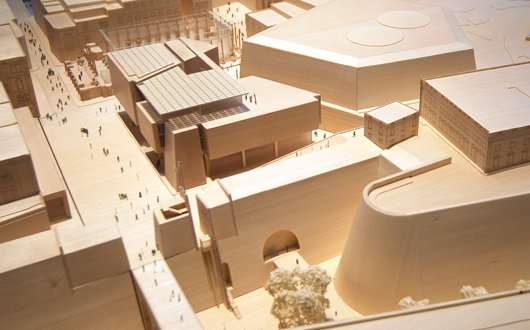
“THE MOST HUMBLE City of Valletta” is the official title of Malta’s capital, which was founded in response to Moorish threats and withstood the onslaught of Nazi bombers. But ‘La Ċittà Umilissima’ is now facing a humiliation brought about by its own rulers, who have commissioned the modernist architect Renzo Piano to reshape the entrance to the oldest quarter of the city. ‘Starchitects’ like Piano are so called because their temporal success lies more on their ability to create hype about their sensational and novel designs than on the quality and timelessness of their work itself. Most notorious for collaborating with Richard Rogers on the despised Pompidou Center in Paris, Piano has re-envisioned Valletta’s city gate without a gate, placed a new Maltese parliament on stilts next to it, and developed plans for a roofless theatre on the bombed-out ruins of the Royal Opera House.
The foundation of the Maltese capital was initiated by the Order of Malta during its rule over the island, not long after the famous Ottoman attack of 1565 was repulsed. The city takes its name from Jean Parisot de Valette, one of the greatest men to have ever served as Prince & Grand Master of the Sovereign Military & Hospitaller Order of St. John of Jerusalem, and the knights’ impact on Valletta’s development have led some to call it “the city designed by gentlemen for gentlemen”. This stateliness led some to give ‘The Most Humble City’ its second moniker of ‘La Superbissima’ — the most proud.
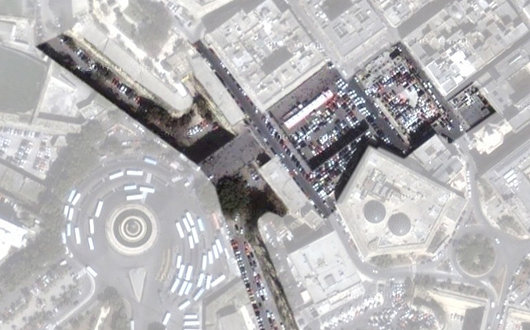
The area being redeveloped lies where the main gate to the old city stood until it was destroyed by German bombers during the Second World War. The open area created is, sadly, now much abused as space for parking automobiles.
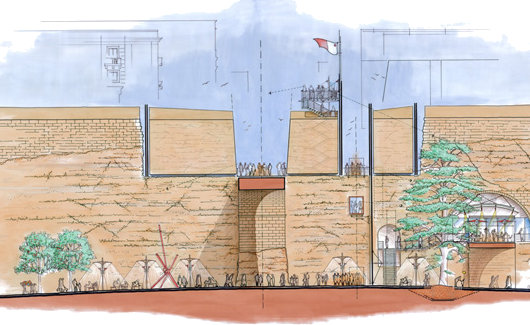
Renzo Piano has designed a gate-less gate to replace the Italian modernist gate (not an entirely insensitive design I must admit) that was constructed in the 1970s.
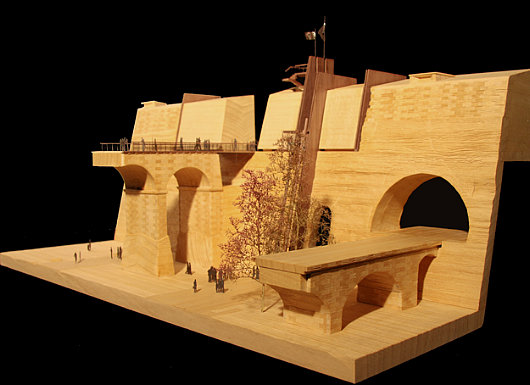
The design includes what I think is an exterior elevator, topped off with poles from which to fly the Maltese and European flags.
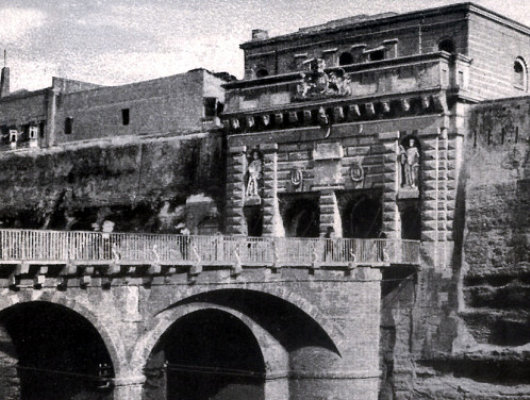
Since the gate is meant to be for pedestrian use with no vehicular traffic, one can’t really think of any reason not to take the simpler option of restoring the old gate that existed within living memory. An appropriate touch might be to top the gate off with a sculpted rendition of the arms of the Maltese republic instead of the lioned-and-unicorned British royal arms that were added after the Royal Navy appropriated the island from the Napoleonic interlopers who had themselves seized it from the Knights two years before.
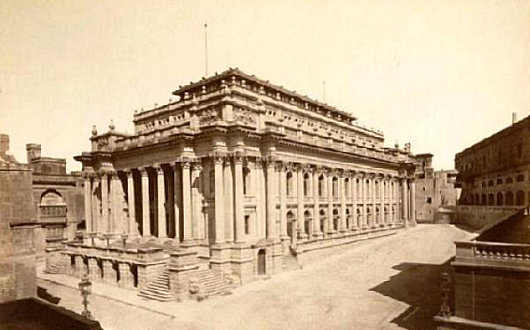
Valletta has lacked a theatre of suitable grandeur since the loss of its Royal Opera House in 1942. The structure was designed by Edward Middleton Barry, the third son of Sir Charles Barry who collaborated with Augustus Welby Northmore Pugin on the Houses of Parliament in London. (Compare the Barry-Pugin collaboration to Piano-Rogers; the Palace of Westminster or the Centre Pompidou? Not a hard choice for any but the most indoctrinated). As it happens, Barry fils also designed Covent Garden Theatre, which became the Royal Opera House, London in 1892, twelve years after his death. Valletta’s opera house burned down only six years after it opened but the proud citizens rebuilt to its original design. On the evening of April 7, 1942, the house met its ultimate destruction at the hands of the Luftwaffe. After the war’s end, German prisoners-of-war held in Malta offered to rebuild the Royal Opera House themselves for a nominal sum as an act of atonement. But at a time of high unemployment when many Maltese were leaving the island, the government felt compelled to decline the offer.
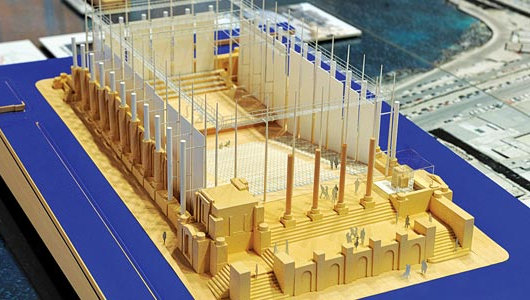
A 1950s scheme was chosen to mostly rebuild the opera house to a slightly different design by an Italian architect, Dr. Ing. Zavellani-Rossi, but the plan ground to a halt for lack of funds. In the 1980s, Renzo Piano was contacted and a design approved by the government, which continued dithering and also considered a design by the Maltese architect Richard England. In the middle of the 2000s, Piano was commissioned for the project yet again and produced the roofless design which has caused consternation and protest among the citizens of Valletta and the cultural community of Malta as a whole.
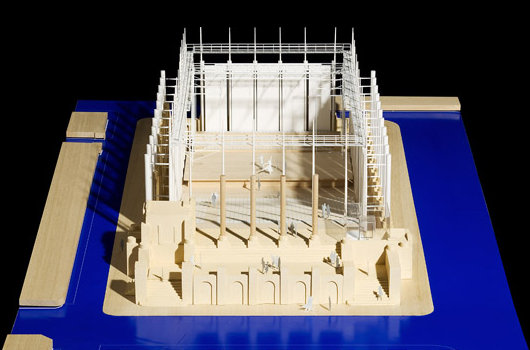
Since the demise of the Royal Opera House, Malta has lacked a National Theatre, and despite the beneficial Mediterranean climate Renzo Piano’s roofless design can clearly only be used seasonally, rather than year-round.
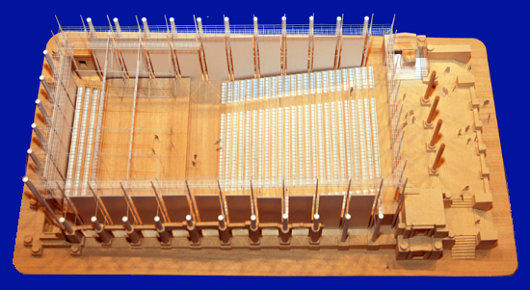
A number of more traditional or restoration-oriented counter-proposals to the modernist designs have been made, one of which even managed to garner an endorsement from the British theatrical producer Sir Cameron Mackintosh.
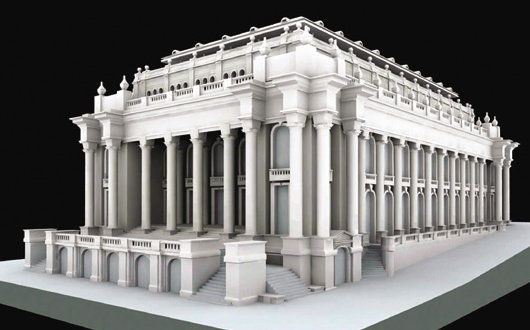
Again, given the controversy that any modernist design inevitably provokes, wouldn’t an outright restoration be simpler?
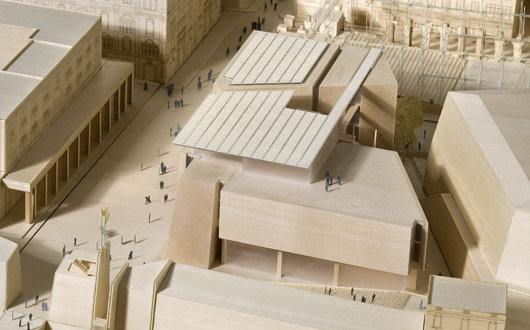
The third component of the design is a new parliament building, linking the new city gate-without-a-gate to the roofless theatre. Malta’s parliament currently convenes in the Armoury of the former Palace of the Grand Masters of the Order of Malta, which now doubles as legislative home and presidential palace. As outstandingly beautiful as many of the chambers of the Magistral Palace are, the parliament is forced into modern accommodation in the Armoury because none of the other gracious halls are large enough to fit both parliamentarians and the public who submit them to rigorous scrutiny. Yet Valletta has no lack of stately buildings (especially in the old city) that might better accommodate the Republic’s legislature. Some have suggested the Auberge de Castile or the Auberge d’Italie — the palaces that once housed those countries’ natives who defended Malta and the freedom of the Christian Mediterranean as Knights.
As critics have pointed out, the site in between the opera house ruins and the city gate does not have any potential room for expansion, and does not offer any significant improvement in working space from the legislature’s current location. Worth the cost of employing one of the world’s most notorious ‘starchitects’ and blighting the old city until someone is brave enough to tear it down? Hardly. The citizens of Malta would be wiser to save their money in these straitened times so that they are not compelled to demolish expensive structures come the day when public tastes improve.
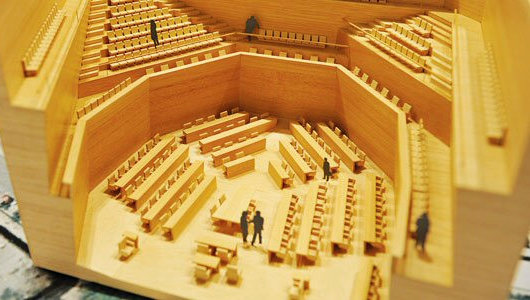
Search
Instagram: @andcusack
Click here for my Instagram photos.Most Recent Posts
- Sag Harbor Cinema March 26, 2025
- Teutonic Takeover March 10, 2025
- Katalin Bánffy-Jelen, R.I.P. March 3, 2025
- Substack Cusackiensis March 3, 2025
- In the Courts of the Lord February 13, 2025
Most Recent Comments
Book Wishlist
Monthly Archives
Categories



This evil scheme must be resisted. Modernism is worst of all in architecture: the appalling “pictures”, the discordant music, and the meaningless prose dressed for verse can all be ignored but not architecture. See the wise articles and books by Roger Scruton on this and also the polemical website
http://zeta.math.utsa.edu/~yxk833/index.html
Modernism is worst of all in architecture: the appalling “pictures”, the discordant music, and the meaningless prose dressed for verse can all be ignored but not architecture.
Indeed!
Just say the word, and I shall gather the best men from my reactionary underground organization Classical Architecture Movement of the People (CAMP), and we will discreetly take care of these ill-conceived plans!
Given that all the other plans thus far have fallen through, how likely is it that this one will be accepted?
Having been there and lamented the unfortunate condition of this significant space while visiting, I find this to be a rather compelling proposition and hardly worthy of such unsubstantiated scorn. A certain degree of skepticism is healthy of course, and often warranted. Outright dismissal, however, seems hardly productive (or, for that matter, interesting).
With luck these shoddy modernist designs will be built to equally shoddy standards, and will safely come down of their own accord within a generation.
Never read such tosh! Restoration and rebuilding a Walt Disney version of what there once was are not one and the same thing, Mr Cusack. Stop living in the past.
O, the old Walt Disney chestnut!!! Nothing separates the wheat of engagers in serious discourse from the chaff of the idle indoctrinated like the old Walt Disney chestnut.
Mr. Gattaldo, on the website I accessed by clicking your name, I found this image:
http://www.pardogatto.com/Gattaldo/img/Liberty1.jpg
Isn’t this based on “Liberty Leading the People” by Delacroix? Stop living in the past!
Also:
“Restoration and rebuilding a Walt Disney version of what there once was are not one and the same thing” — Gattaldo
Please point out to us where Cusack said they are the same thing? Or even implied so?
Ms. Smith, your point being? Making a cultural reference to history is one thing, rebuilding Barry’s Opera House and Thompson’s gate from scratch is quite another.
Mr Robert H., I wouldn’t describe Mr Cusack as chaff. Everyone is entitled to his opinion.
I agree with Gattaldo, we need to stop living in the past!
Let’s demolish Valletta and get Zaha Hadid to do the city over. Who’s with me???
Gattaldo, you modernists build such ugly buildings that we normal people feel compelled to rebuild exact replicas just to smack you in the face. Maybe if modernist edifices were more sensitive to the world around them, ordinary people wouldn’t feel so repulsed by them.
What’s gone is gone. I don’t think rebuilding the opera house exactly as before is a good idea, but when you consider how bad 9 out of every 10 of our modern architects are (and how expensive they are too, for buildings that do not survive long), a precise reconstruction becomes attractive.
And this is not “living in the past”, a cheap and facile comment. This is planning for the future.
Very funny mr Frobisher. Please do not distort my words. I have had the opportunity of restoring two lovely 16th century properties on the island and I have no wish to demolish history. I don’t however believe in a fake rehash of the past.
Really, I don’t understand why the act of rebulding has recently become a toboo. It has always existed, now is seen almost like a crime against development and of course modernity. In Europe, where such enormous amount of heritage was destroyed, it could be seen as obviousness, but it isn’t….unfortunately.
Yours sincerely, a student of architecture
Dresden rebuilt its Cathedral … so why shouldn’t rebuild our theatre … we who were bombed two times more than Dresden?
Mr. Piano and to the rest of modernist architects a little bit of humility would give you more respect and credibility.
well i dont agree with not having a roof on the opera house. i think that there should be a roof made out of glass but which opens and closes so in summer when it is hot,we can enjoy the sunlight while in witer when it is raining it can close.